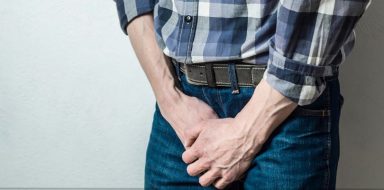How to Relax Your Bladder Muscles
Most of us probably do not think about our bladder muscles, but your bladder muscles can play a role in overactive bladder (OAB) symptoms. Similar to other muscles on your body, you can strengthen pelvic muscles and strengthen bladder muscles to reduce symptoms of OAB. Continue reading to find out how to relax your bladder muscles and how this may improve your OAB symptoms.
The Relationship Between Bladder Muscles and OAB
Overactive bladder is a common issue for adults, especially as they age. According to the Urology Care Foundation, about 30% of men and 40% of women have symptoms of an overactive bladder.
Different factors contribute to an overactive bladder, including nerve signals between the brain and the bladder. There is also a relationship between the bladder muscles and urinary urgency and leakage.
Normally when you have to urinate, your brain sends a signal to the bladder. The bladder muscles squeeze, the urethra opens, and urine flows out of the bladder. When the bladder is not full, the muscles relax.
Overactive bladder can develop for a variety of reasons, such as nerve damage that affects the signals between the bladder muscles and the brain. It can also occur if the muscles in your bladder are too active. This is why knowing how to relax your bladder muscles is important.
The overactive muscles make you feel urinary urgency. Also, the muscles that support your bladder may be weak, which contributes to urinary leakage.
Relaxation Techniques and Exercises for OAB
Various treatment options are available to treat overactive bladder. For example, in addition to medication, lifestyle changes may help reduce the symptoms. Exercises that relax and strengthen the bladder are also useful.
Exercises that help relax the bladder muscles may help reduce symptoms of overactive bladder. In addition, performing exercises that strengthen the muscles and support the bladder may also help reduce urine leakage and incontinence.
It is best to talk with your healthcare provider to determine which exercises may be most beneficial. Below are examples of typical techniques and exercises for OAB.
1. Kegel Exercises
Kegel exercises help strengthen the muscles of the pelvic floor that support the bladder. If you have an overactive bladder, weak pelvic floor muscles can contribute to urine leakage.
To perform a Kegel, squeeze the muscles you use to stop the flow of urine. Hold the squeeze for about five seconds and relax. Repeat the exercise about five times. As the muscles get stronger, increase the duration to about 10 seconds. Perform Kegels a few times a day or as instructed by your doctor.
This article will explore the best iron-rich foods, looking at 9 great options. Read on to learn more here.
2. Quick Contractions
Doing quick contractions of the pelvic floor muscles is a variation of Kegels. Squeeze the pelvic floor muscles quickly about 10 times in a row. The fast contractions signal the bladder to relax and may help with the urge to urinate.
3. Vaginal Strengthening
Strengthening the vagina may also help support the bladder and improve symptoms of OAB. Vaginal strengthening is often performed using a small cone that is inserted into the vagina. The cone acts as a small weight, which is held inside the vagina for a few minutes at a time to strengthen the vaginal muscles.
4. Biofeedback
Biofeedback is a technique used to help control body functions that you normally may not, such as blood pressure. Biofeedback is done with a medical professional to help you learn specific pelvic floor and bladder exercises.
Biofeedback involves using small sensors placed in the vagina while you tighten pelvic floor muscles. The sensors display a graph on a computer to provide feedback on whether you are using the correct muscles.
5. Deep Breathing
Although deep breathing does not directly work the bladder muscles, it can be helpful. Tension can increase the urgency that comes with OAB. Focusing on deep breathing and relaxing the abdominal and pelvic muscles can help with decreasing tension.
Muscles of the Bladder
Different muscles make up the bladder and surrounding area, including the following.
- Detrusor muscles: This muscle is within the wall of the bladder. It contracts during urination to allow urine out.
- Urethra: This is the tube that allows urine to exit from the bladder.
- Pelvic floor muscles: These muscles support the bladder, rectum and the vagina in women.
- Sphincter: This muscle circles the urethra to hold urine in and relaxes to let urine out.
What Happens to the Bladder Muscles During an OAB Flare-Up?
During a flare-up of overactive bladder, the detrusor muscles may contract and squeeze erratically even if the bladder is not full. The contraction is involuntary and produces the sudden urge to go to the bathroom.
The urge to urinate before the bladder is full may come on frequently. Even though the bladder is not full, the sensation can also lead to urine leakage. This occurs because the bladder muscles squeeze and allow urine to come out.







